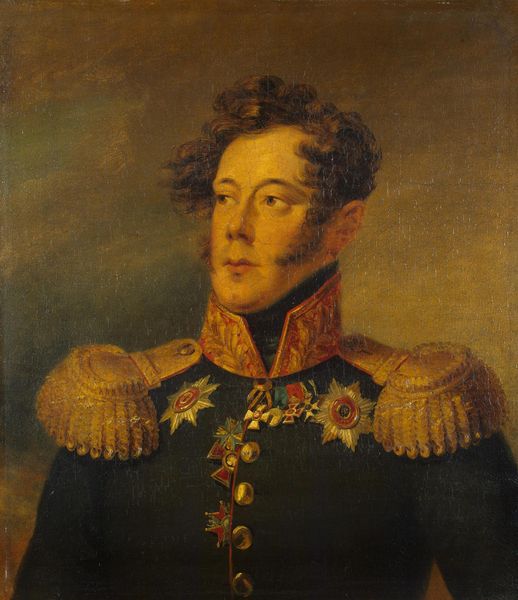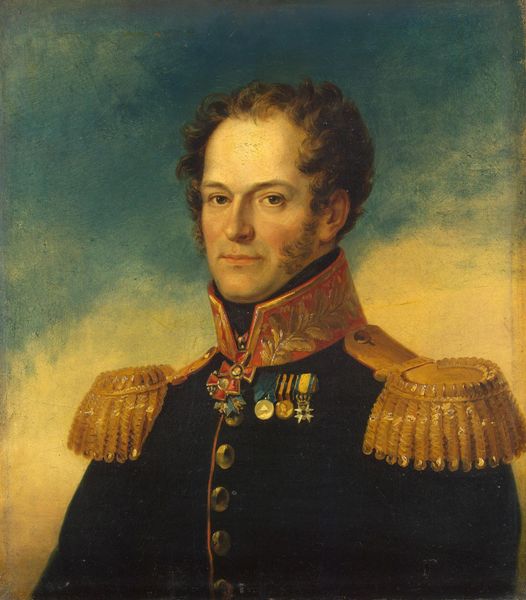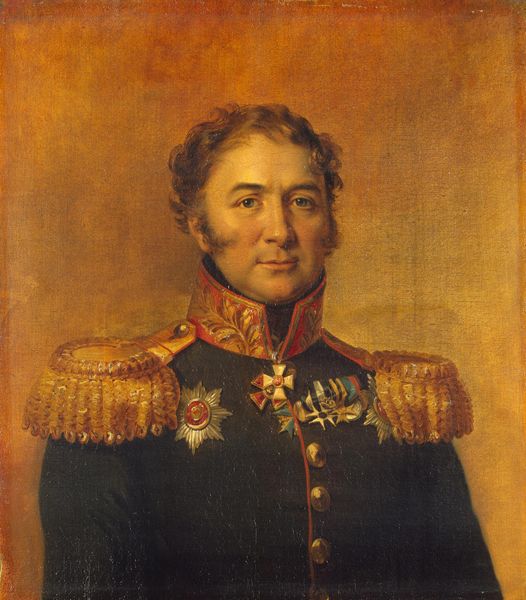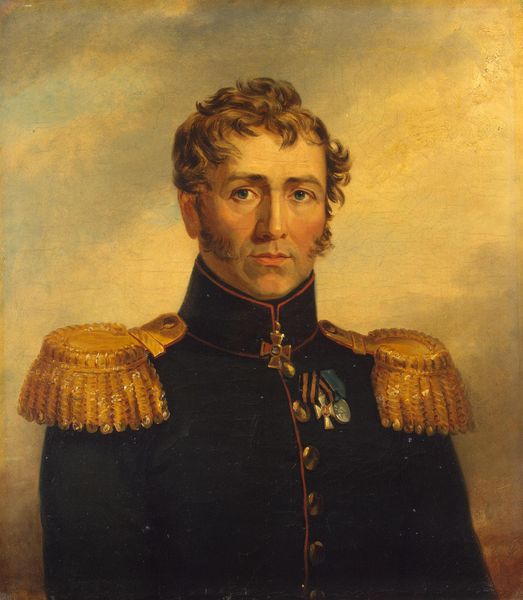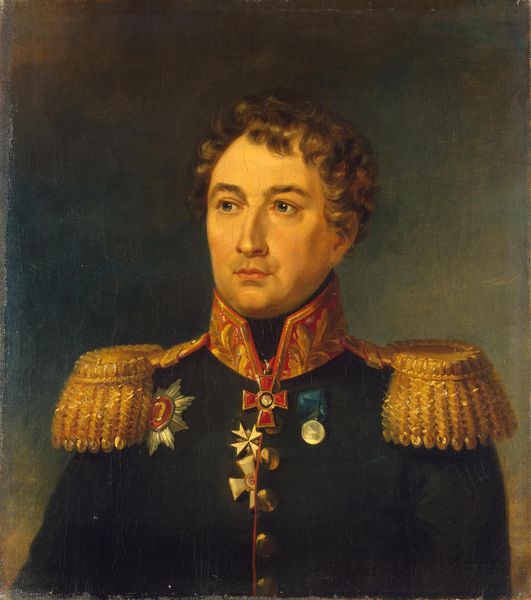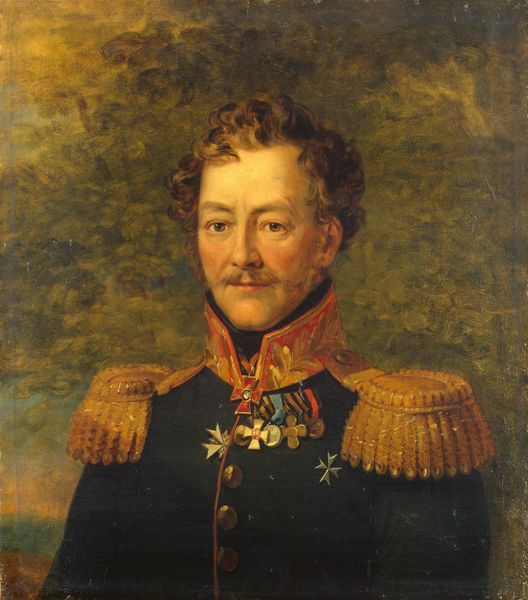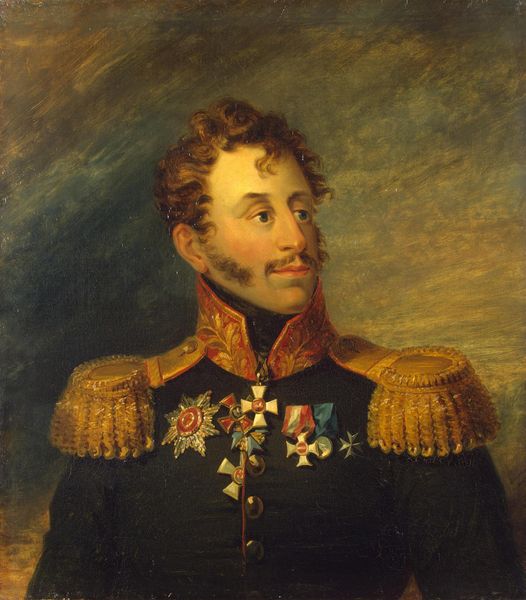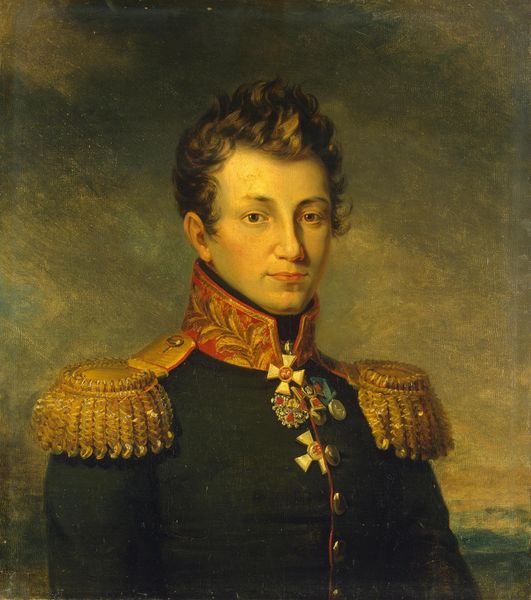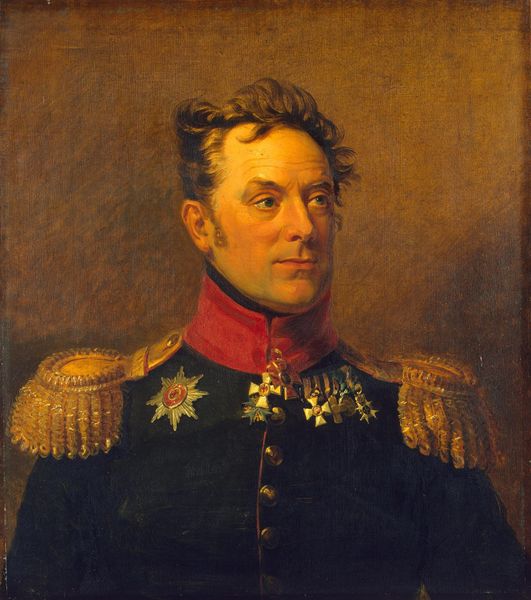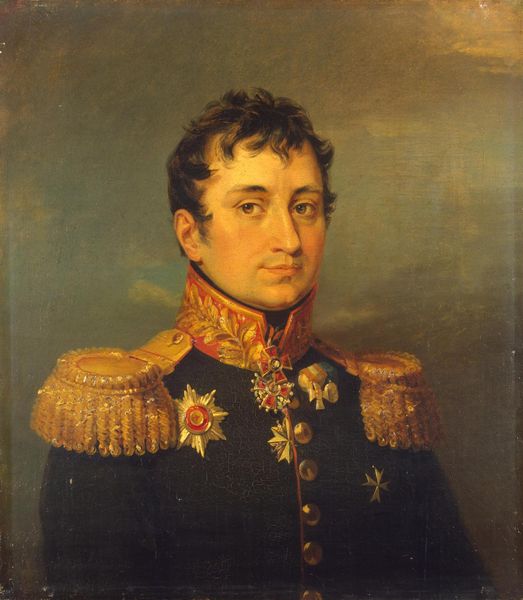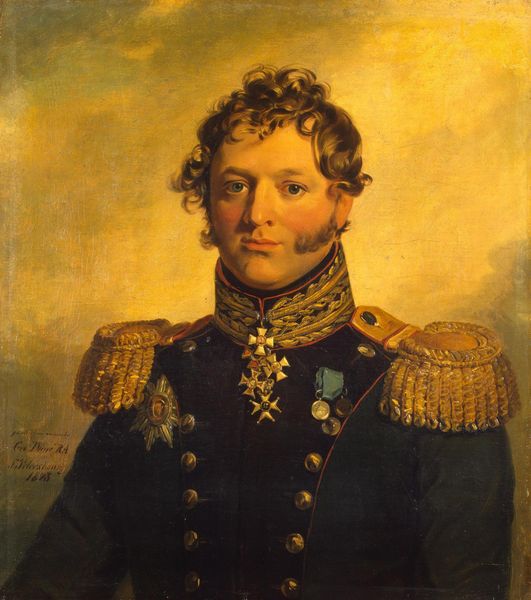
oil-paint
#
portrait
#
oil-paint
#
romanticism
#
history-painting
Copyright: Public domain
Editor: This is George Dawe’s "Portrait of Moisey I. Karpenko," done in oil. There’s something very formal about this painting, even a little stiff. He looks proud but almost...resigned? What's your read on this? Curator: I think that resignation speaks volumes, especially considering the historical context. We see the weight of societal expectations in his eyes. Think about the pressures on men, especially military men, during this period – the push for valor, for success, and the real cost of war. Editor: So, it’s a kind of critique? Curator: It can be read that way, definitely. It begs us to ask: what is *not* being shown here? The medals are presented with meticulous detail, but what do they really represent? Victory, glory? Or trauma, loss, perhaps even guilt? Think about how history painting and Romanticism often whitewashed or glorified conflicts, rarely showing its brutal cost. Editor: That’s true; we seldom think about that. The cost to those who lived through that history. Curator: Exactly! How do we reconcile that carefully constructed image of masculine duty and glory with a deeper questioning of war's real impact on individuals? Editor: It changes my view quite a bit. I focused so much on the external… Curator: And isn't that precisely the point? The artist uses the external trappings of power and status to provoke questions about their true meaning and at what cost they were earned. We can analyze the portrait through many lenses – gender studies, historical materialism, psychoanalysis – to unpack its multi-layered commentary on power, duty, and masculinity. Editor: I'll never look at another portrait the same way again.
Comments
No comments
Be the first to comment and join the conversation on the ultimate creative platform.
